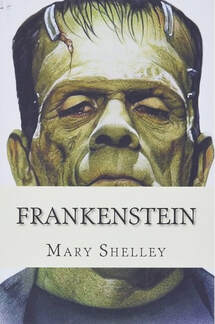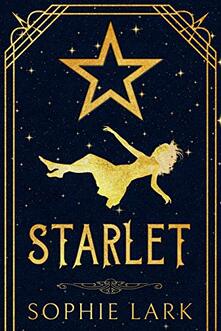|
Hello blog readers and people visiting this site after meeting me at PNWA 2023!
I am exhausted after PNWA's wonderful conference, so this is the tiny little blog post I can wring from my brain this week. Next week I will talk about if the cost of the conference is worth it to help you decide if it's something you'd like to attend next year. (Or even if a conference more local to you is something you'd like to attend!) Other upcoming posts I can currently tease: A review of Throne of Glass from a newbie to Sarah J. Maas: is the hype worth your time? Lessons from a Classic: Asimov's iRobot Lessons from my first (and so far only) DNF of 2023 I was also recommended some amazing writing resources at the conference, so I'll be reviewing those as well, including the one I'm most excited for, the Trope Thesaurus by Jennifer Hilt. Don't forget the Judging More than Just the Cover Book Club podcast is currently reading Fourth Wing. Get ready for my hot takes on the Murder College trope! See you here next week, readers! If you're here because we met at PNWA give a shout out in the comments!
0 Comments
The Amazon cover for the book features the green classic monster, not as described in the book. Fall is spooky season and one of the main Halloween monsters is of course Frankenstein's monster, sometimes called Adam. Since it is a foundational text to scifi--the very first scifi, in fact--I decided to read the original Frankenstein by Mary Shelley. Rather than review it, I decided to write about what I learned about writing irom this classic novel (or really a novella, it was about 110 pages).
1) Don't be afraid of a unique story structure Frankenstein is actually a letter written by a sea captain to his sister about meeting Dr. Frankenstein and that man's story. So the meat of the book is "story within a story" since you know in the end things will circle back to that boat captain. At one point, the story becomes the monster's story being told to Dr. Frankenstein being told to the captain. Like Russian nesting dolls. However, this complicated structure was made very clear and even acted as foreshadowing of excitement when the start of Dr. Frankenstein's tale got a little dry. 2) Don't overdo the backstory While it may have been the style of the time, modern readers now don't need Dr. Frankenstein's life story to begin with his parents meeting. When I saw that was how the story began, I was dreading the rest. It didn't get interesting until Dr. Frankenstein left for college. So while it's good to read classics, keep in mind how very different the market is today, and don't accidentally pick up on very out of date style choices. 3) Build sympathy by showing what your characters wants most We were all a little afraid of Frankenstein's monster after his first kill, naturally, because he's not on the page much to defend himself. However, he makes it clear exactly what he wants: a lover. He is so intensely lonely and in need of contact that after he explains it, you can't avoid sympathy. There is even some sympathy for Dr. Frankenstein when he just wants to protect others. Get your readers to choose sides by showing a deep want and explaining why--and why they can't have it (yet). 4) Keep up with the latest innovations Mary Shelley was inspired by Galvanism and advances with electricity. If she'd only stayed aware of what was going on in the literary world, she wouldn't have run into the concepts that allowed her to conceive of Frankenstein. When looking for inspiration, look at innovations in fields that excite you: space, medicine, engineering, environmental science, oceanography, etc. Even keeping up with new historical finds in archaeology or anthropology, if you're more of a history/fantasy writer. You never know when you'll run into something that will inspire, so get out of your typical bubble. Those are my big takeaways from Frankenstein for writers. I will admit I was very surprised that a lot of classic Frankenstein tropes weren't in the original book--no castle, no Igor, no villagers with pitchforks and torches. He literally made his monster in his dorm room. (Try explaining that mess to your R.A.) I think he was even described as yellow, not green. So the Hollywood-ization of Frankenstein has clearly overshadowed the original for my entire experience. Kind of wild! Have you read Frankenstein? What were your writing (or reading) takeaways? What are some of your spooky season favorites? Let's discuss in the comments! I decided to read Starlet by Sophie Lark because I loved Lark's Anastasia, which I read earlier this year. I chose the stand alone Starlet, a historical mystery.
Starlet focuses on Alice, the sister of a 1940's Hollywood star named Clara Bloom. When Clara is murdered on set, look-alike Alice sets up to finish Clara's final movie while also investigating the cast and crew to find the killer. She teams up with Jack, a local police detective, and together they dive into the mysteries of old Hollywood and uncover far more than just a murderer. I liked plenty about this book. Lark's writing style is pretty invisible to me, allowing me to devour the book in about four sittings. I liked Alice and her motives and the details about how Hollywood operated. I liked the mystery too, with various twists and turns making it all the more interesting. However, I was very disappointed in the reveal of the killer. No spoilers about why, it just felt sad. I also felt like the ending after the reveal came out of nowhere. The romance between Alice and Jack wasn't as fleshed out as I wanted, and some of the characters needed a little more fleshing out. This book is for you if you like old Hollywood affairs like in The Seven Husbands of Evelyn Hugo, if you want a classic-feeling mystery, or if you want a quick/easy read. This book isn't for you if you want romance at the forefront, if you want a feeling of justified vindication at the reveal of the killer, or if you're looking for factual old Hollywood events. Have you read Starlet? Have you enjoyed Sophie Lark's other books? Let's discuss in the comments! |
Archives
April 2024
Categories
All
|



 RSS Feed
RSS Feed